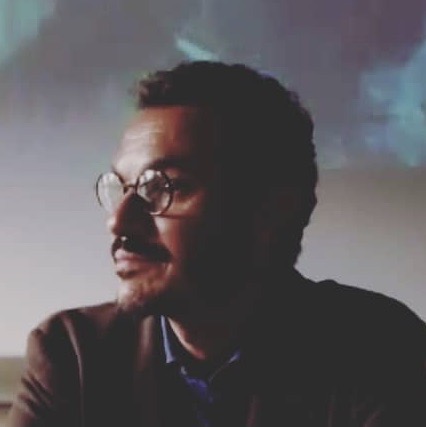Studying at the University of Verona
Here you can find information on the organisational aspects of the Programme, lecture timetables, learning activities and useful contact details for your time at the University, from enrolment to graduation.
Academic calendar
The academic calendar shows the deadlines and scheduled events that are relevant to students, teaching and technical-administrative staff of the University. Public holidays and University closures are also indicated. The academic year normally begins on 1 October each year and ends on 30 September of the following year.
Course calendar
The Academic Calendar sets out the degree programme lecture and exam timetables, as well as the relevant university closure dates..
| Period | From | To |
|---|---|---|
| Sem 1 - sede TN | Sep 14, 2020 | Dec 18, 2020 |
| CuCi IA | Sep 21, 2020 | Oct 31, 2020 |
| CuCi IB | Nov 9, 2020 | Jan 9, 2021 |
| CuCi IIA | Feb 15, 2021 | Apr 1, 2021 |
| Sem 2 - sede TN | Feb 15, 2021 | May 28, 2021 |
| CuCi IIB | Apr 14, 2021 | May 29, 2021 |
| Session | From | To |
|---|---|---|
| sessione d'esame invernale CuCi | Jan 11, 2021 | Feb 13, 2021 |
| sessione d'esame estiva CuCi | Jun 7, 2021 | Jul 24, 2021 |
| sessione d'esame autunnale CuCi | Aug 23, 2021 | Sep 18, 2021 |
| Session | From | To |
|---|---|---|
| sessione di laurea invernale 19-20 | Apr 7, 2021 | Apr 13, 2021 |
| sessione di laurea estiva 20-21 | Jul 5, 2021 | Jul 10, 2021 |
| Sessione autunnale di laurea a.a. 2020/21 | Nov 8, 2021 | Nov 13, 2021 |
| Sessione straordinaria di laurea a.a. 2020/21 | Mar 28, 2022 | Apr 2, 2022 |
| Period | From | To |
|---|---|---|
| Festa di Ognissanti | Nov 1, 2020 | Nov 1, 2020 |
| Chiusura Ateneo ponte Immacolata | Dec 7, 2020 | Dec 7, 2020 |
| Festa dell'Immacolata | Dec 8, 2020 | Dec 8, 2020 |
| Vacanze di Natale | Dec 24, 2020 | Jan 6, 2021 |
| Vacanze di Pasqua | Apr 2, 2021 | Apr 6, 2021 |
| Festa della liberazione | Apr 25, 2021 | Apr 25, 2021 |
| Festa del lavoro | May 1, 2021 | May 1, 2021 |
| Festa del Santo Patrono | May 21, 2021 | May 21, 2021 |
| Sospensione delle lezioni | May 22, 2021 | May 22, 2021 |
| Festa della Repubblica | Jun 2, 2021 | Jun 2, 2021 |
| Vacanze estive | Aug 9, 2021 | Aug 15, 2021 |
Exam calendar
Exam dates and rounds are managed by the relevant Culture and Civilisation Teaching and Student Services Unit.
To view all the exam sessions available, please use the Exam dashboard on ESSE3.
If you forgot your login details or have problems logging in, please contact the relevant IT HelpDesk, or check the login details recovery web page.
Academic staff

Bassetti Massimiliano
 massimiliano.bassetti@univr.it
massimiliano.bassetti@univr.it
 045802 8376
045802 8376
 giovanni.bernardini@univr.it
giovanni.bernardini@univr.it
 giovanni.ciappelli@univr.it
giovanni.ciappelli@univr.it
Stegagno Carlotta
 gianmaria.varanini@univr.it
gianmaria.varanini@univr.it
Study Plan
The Study Plan includes all modules, teaching and learning activities that each student will need to undertake during their time at the University.
Please select your Study Plan based on your enrollment year.
1° Year
| Modules | Credits | TAF | SSD |
|---|
Medieval History, History of Christianity and Churches
Early Modern History I - LM (Historical Anthropology)
Contemporary History I - LM
1 module among the following1 module between the followingHistory of Political Institutions II
History of Political Thought
1 module between the followingHistory of Science and Technology - LM
1 module among the followingHistory of Medieval Art I
Digital tools for historical research
2° Year activated in the A.Y. 2021/2022
| Modules | Credits | TAF | SSD |
|---|
| Modules | Credits | TAF | SSD |
|---|
Medieval History, History of Christianity and Churches
Early Modern History I - LM (Historical Anthropology)
Contemporary History I - LM
1 module among the following1 module between the followingHistory of Political Institutions II
History of Political Thought
1 module between the followingHistory of Science and Technology - LM
1 module among the followingHistory of Medieval Art I
Digital tools for historical research
| Modules | Credits | TAF | SSD |
|---|
Legend | Type of training activity (TTA)
TAF (Type of Educational Activity) All courses and activities are classified into different types of educational activities, indicated by a letter.
History of the Ancient Near East (2020/2021)
Teaching code
4S007540
Teacher
Coordinator
Credits
6
Language
Italian
Scientific Disciplinary Sector (SSD)
L-OR/01 - HISTORY OF ANCIENT NEAR EAST
Period
CuCi IIA, CuCi IIB
Learning outcomes
Aim of the course is providing a general knowledge of the political, economic, social and cultural history of the civilizations of the pre-classical Ancient Near East, from the earliest phases (III millennium BCE) through the downfall of the Iron age Mesopotamian kingdoms (VI century BCE). It will also provide the critical tools required to study and analyse the documents and sources that are typical of those ages that pre-date the Greek-Roman history, by examining some specific examples that refer to highly significant periods (Late Bronze Age, Early Iron Age).
Program
The course will regard the historical and cultural development of the civilizations of the Ancient Near East. Among the main topics, the following phases will receive specific attention:
- IV-III millennium, until the Ur III dynasty
- Birth of the great kingdoms of the Late Bronze Age
- The Amarna archives and the dyplomacy in the Ancient Near East
- The collapse of the Bronze age kingdoms and the Dark age
- The Neo-Assyrian rebirth and the small kingdoms of the Iron age
- From the Late Babylonian Empire to the Persian egemony
Students who do not attend the lessons must contact the teacher to define a specific program.
| Author | Title | Publishing house | Year | ISBN | Notes |
|---|---|---|---|---|---|
| Giusfredi, Federico | Babilonia e le sue storie | Bruno Mondadori | 2012 | 9788861596672 | Testo facoltativo di riferimento |
| - | Fonti documentarie in traduzione, fornite a lezione dal docente / Translated sources that will be provided by the teacher in class | ||||
| Giusfredi, Federico | Il vicino oriente antico: breve storia dalle origini alla caduta di Babilonia | Carocci | 2020 | 8829002976 | Il volume è in corso di stampa e apparirà a ottobre 2020. Lo studente potrà scegliere se usare questo manuale in alternativa a quello a cura di Lucio Milano. |
| Lucio Milano | Il vicino Oriente antico dalle origini ad Alessandro Magno | EM Publishers | 2012 | 9788897514091 | |
| Mario Liverani, Alfonso Archi, Giovanni Garbini | Voce "Vicino Oriente antico. Storiografia" | Istituto della Enciclopedia Italiana Treccani | 2001 |
Examination Methods
Oral test. Questions will regard the political, economic, social and cultural history of the Ancient Near East. The student will also be asked to critically comment one of the sources discussed in class.
During the test, together with the historical knowledge, the teacher will also judge the skill at critically analyse the sources, and the clarity of the exposition.
Type D and Type F activities
Modules not yet included
Career prospects
Module/Programme news
News for students
There you will find information, resources and services useful during your time at the University (Student’s exam record, your study plan on ESSE3, Distance Learning courses, university email account, office forms, administrative procedures, etc.). You can log into MyUnivr with your GIA login details: only in this way will you be able to receive notification of all the notices from your teachers and your secretariat via email and also via the Univr app.
Linguistic training CLA
Graduation
List of thesis proposals
| theses proposals | Research area |
|---|---|
| Ambiti di tesi | Art & Architecture - Art & Architecture |
Student mentoring
Student login and resources
Manifesto degli studi
Manifesto degli studi del CdLM interateneo in Scienze storiche
Documents
| Title | Info File |
|---|---|
|
|
pdf, it, 466 KB, 26/02/24 |
|
|
pdf, it, 456 KB, 26/02/24 |
|
|
pdf, it, 477 KB, 17/07/24 |
Modalità e sedi di frequenza
La frequenza non è obbligatoria.
Maggiori dettagli in merito all'obbligo di frequenza vengono riportati nel Regolamento del corso di studio disponibile alla voce Regolamenti nel menu Il Corso. Anche se il regolamento non prevede un obbligo specifico, verifica le indicazioni previste dal singolo docente per ciascun insegnamento o per eventuali laboratori e/o tirocinio.
È consentita l'iscrizione a tempo parziale. Per saperne di più consulta la pagina Possibilità di iscrizione Part time.
La sede di svolgimento delle lezioni e degli esami è il Palazzo Paolo Prodi - Trento























